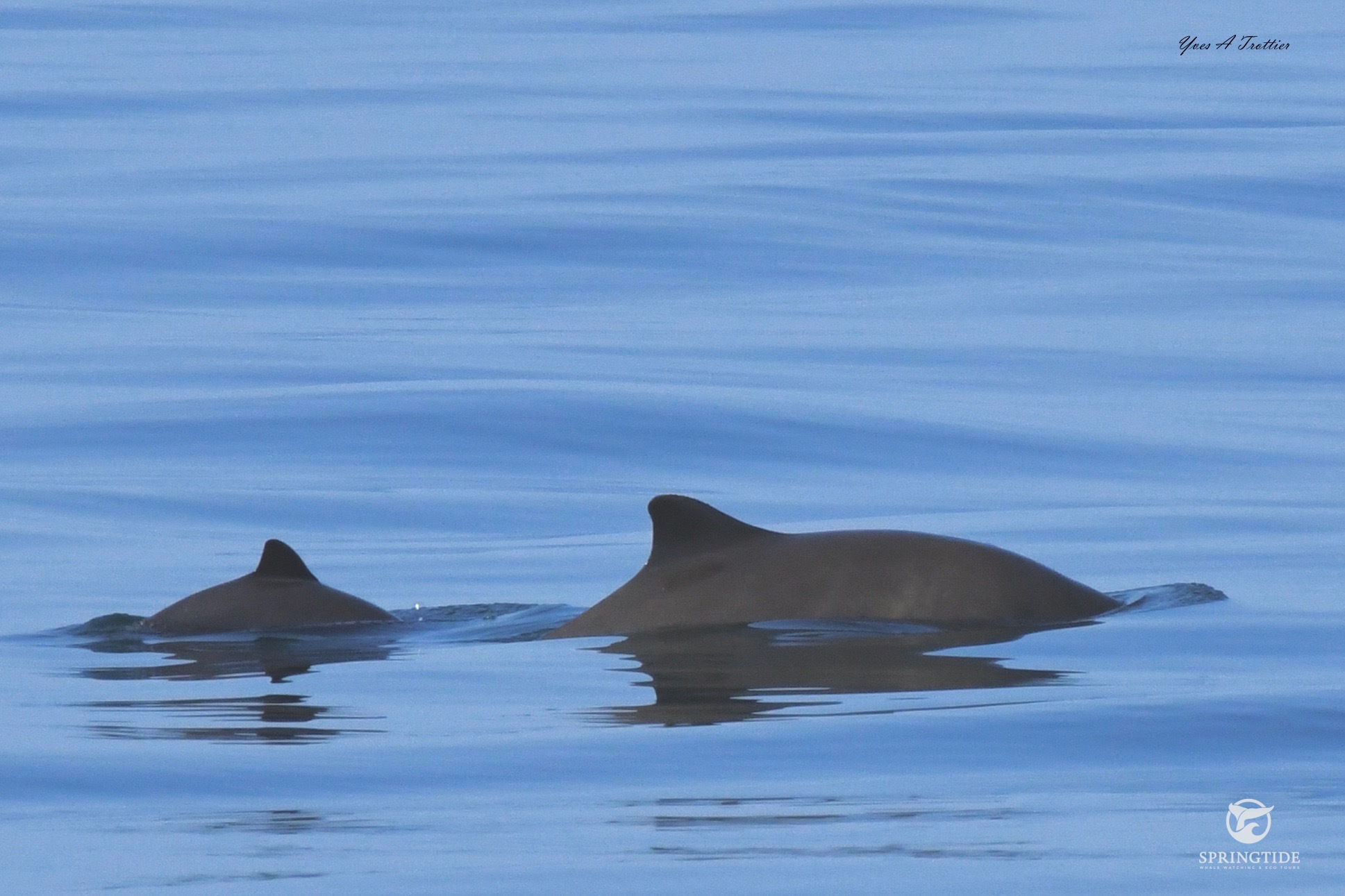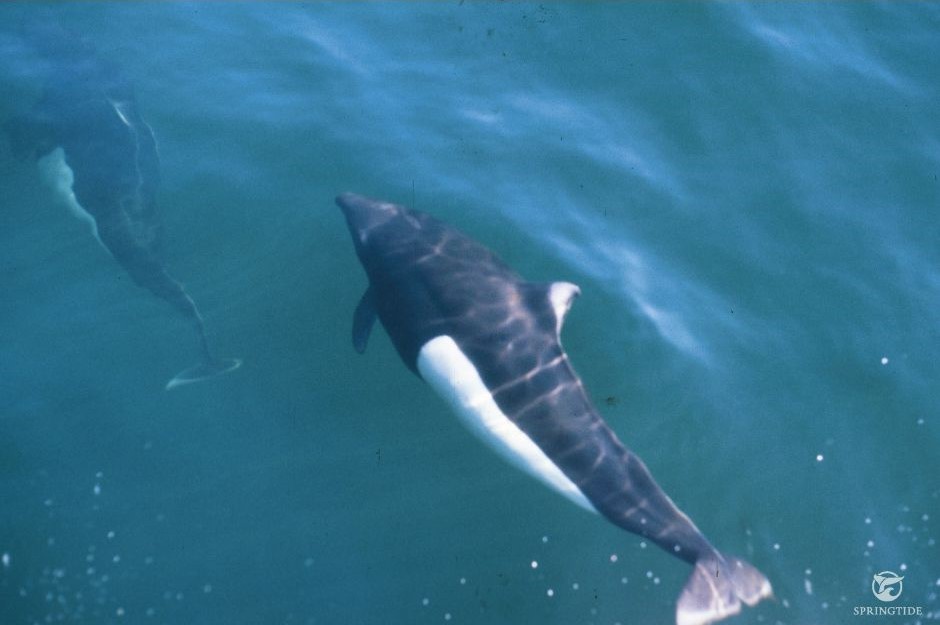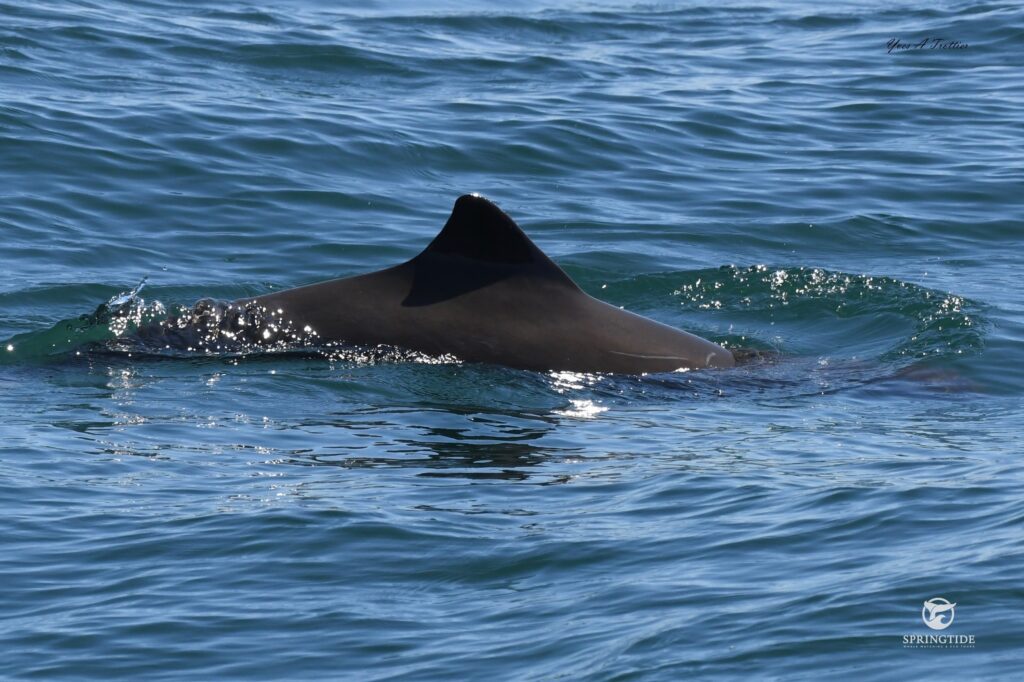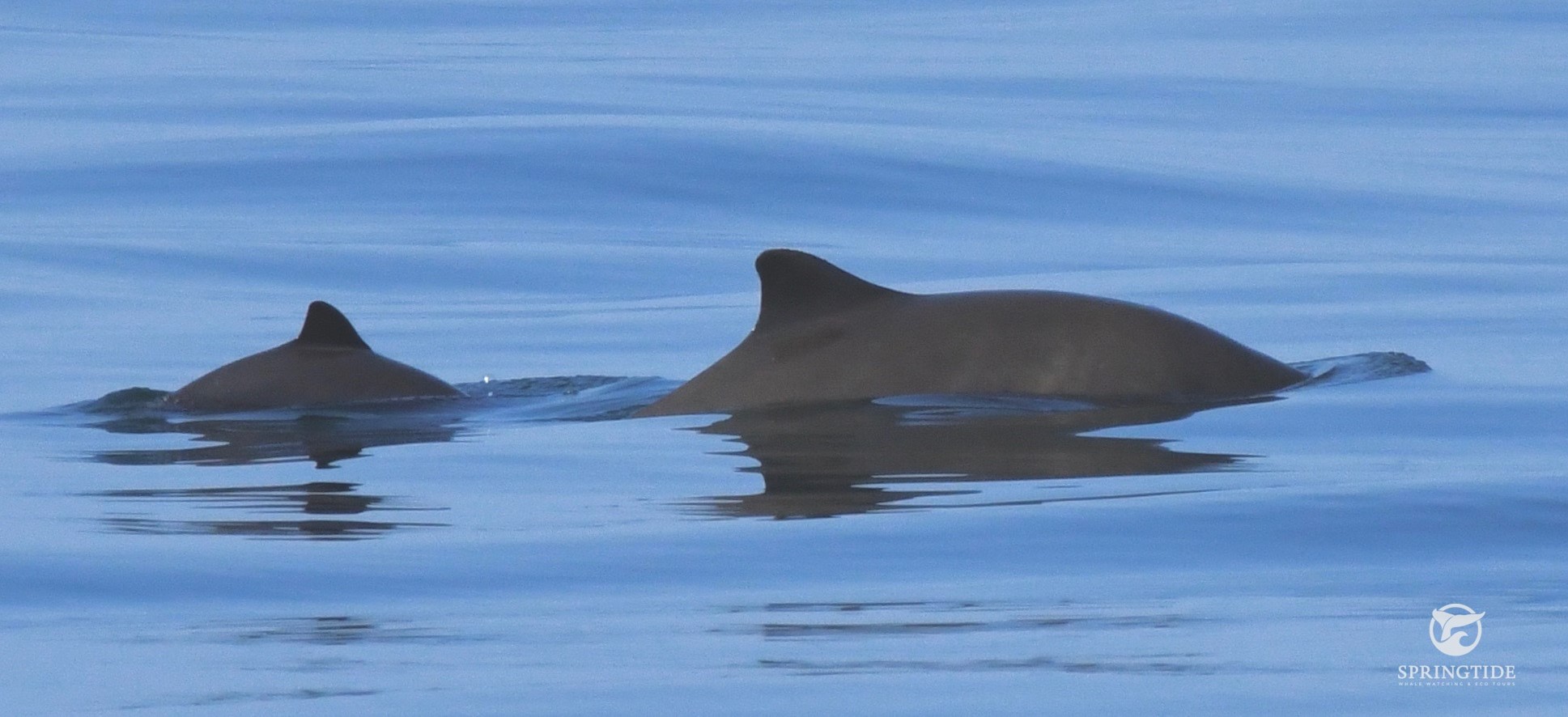
Two of the Salish Sea’s most common inhabitants – Harbour porpoises and Dall porpoises – are in danger of being overshadowed by their larger relatives, the humpbacks and orcas. Both are relatively small for cetaceans, with the Harbour Porpoise being about the size of a large dog and Dall’s Porpoises being about the size of a jungle cat. They’re not small creatures, but they seem to be when compared with Humpback Whales, which though are not the largest whale, are bigger and heavier than a school bus! In fact, both of these types of porpoises are often mistaken for dolphins.

Dall’s Porpoises are perhaps the most common whale in the Salish Sea and considered quite abundant. They are very flashy with their two-toned dorsal fins and oval shaped white patches on each side. Males are usually bigger than females, and like to travel, whereas the females tend to stay put. It’s unlikely that you’ll see them breaching the water, though they have been known to “bow ride” on boats. Unlike Harbour Porpoises, they’re definitely not afraid of boats.

Harbour Porpoises are a bit boat shy, which makes them hard to study, but they stay away from humans for good reasons. They are the most threatened by human activity, and because of their size, feeding activities, and shore preferences, they are often caught in fishing nets. Unfortunately, thousands of Harbour Porpoises die in entanglements every year.
Though Harbour Porpoises are more solitary, they have been seen in groups of two to eight at once. Dall’s Porpoises tend to stick in herds of two to twelve. While Dall’s Porpoises are “opportunistic” feeders who prefer to wait for a convenient moment, Harbour Porpoises will travel long distances to “forage” for the right food source.
But for all their differences, our Harbour and Dall’s Porpoises have one big thing in common: they’re family! And we don’t just mean as whales or cetaceans: female Dall’s Porpoises have been known to mate with male Harbour Porpoises to make a hybrid species of the two. Calves of this combination are light gray and their size ranges somewhere between the size of their parents. (See Donna Naughton’s book for more details!)
Their prominence – and their formation of a unique hybrid species that is only found in Southern British Columbia waters – makes these two cetaceans worth taking note of!
Works consulted and further reading:
Allen, Sarah G., et al (2011). Field Guide to Marine Mammals of the Pacific Coast : Baja, California, Oregon, Washington, British Columbia, University of California Press, (95-385).
“Cetacean Species and Observation” (March 10, 2022). The Government of Canada. https://www.dfo-mpo.gc.ca/species-especes/mammals-mammiferes/cetacean-cetaces/info/index-eng.html
Naughton, Donna, and Canadian Museum of Nature, Canadian Museum (2012). The Natural History of Canadian Mammals. Toronto: University of Toronto Press, (600-701)
